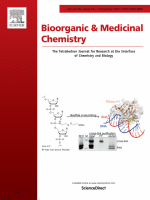|
Autors/es
Cotrina, Ellen Y.; Blasi, Daniel; Vilà, Marta; Planas, Antoni ; Abad-Zapatero, Cele; Centeno, Nuria B.; Quintana, Jordi; Arsequell, Gemma ; Abad-Zapatero, Cele; Centeno, Nuria B.; Quintana, Jordi; Arsequell, Gemma
|
Abstract
In the past few years, attempts have been made to use decision criteria beyond Lipinski’s guidelines (Rule of five) to guide drug discovery projects more effectively. Several variables and formulations have been proposed and investigated within the framework of multiparameter optimization methods to guide drug discovery. In this context, the combination of Ligand Efficiency Indices (LEI) has been predominantly used to map and monitor the drug discovery process in a retrospective fashion. Here we provide an example of the use of a novel application of the LEI methodology for prospective lead optimization by using the transthyretin (TTR) fibrillogenesis inhibitor iododiflunisal (IDIF) as example. Using this approach, a number of compounds with theoretical efficiencies higher than the reference compound IDIF were identified. From this group, ten compounds were selected, synthesized and biologically tested. Half of the compounds (5, 6, 7, 8 and 10) showed potencies in terms of IC50 inhibition of TTR aggregation equal or higher than the lead compound. These optimized compounds mapped within the region of more efficient candidates in the corresponding experimental nBEI-NSEI plot, matching their position in the theoretical optimization plane that was used for the prediction. Due to their upstream (North-Eastern) position in the progression lines of NPOL = 3 or 4 of the nBEI-NSEI plot, three of them (5, 6 and 8) are more interesting candidates than iododiflunisal because they have been optimized in the three crucial LEI variables of potency, size and polarity at the same time. This is the first example of the effectiveness of using the combined LEIs within the decision process to validate the application of the LEI formulation for the prospective optimization of lead compounds.
|

WoS
Scopus
Altmetrics
  
|
|
Publicació
Bioorganic & Medicinal Chemistry, 1 December 2020, v.28, n.23, 115794
|
